Today’s Current Affairs: 14th June 2024 for UPSC IAS exams, State PSC exams, SSC CGL, State SSC, RRB, Railways, Banking Exam & IBPS, etc
Table of Contents
General Anti-Avoidance Rule:
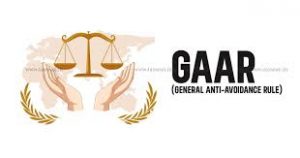
The Telangana High Court has ruled against a taxpayer against whom the revenue department had invoked the General Anti-avoidance Rule (GAAR).
- GAAR is an anti-tax avoidance law in India to curb tax evasion and avoid tax leaks.
- It came into effect on 1st April 2017.
- The GAAR provisions come under the Income Tax Act, 1961.
- It is a tool for checking aggressive tax planning, especially those transactions or business arrangements that are entered into with the objective of avoiding tax.
- It is specifically aimed at cutting revenue losses that happen to the government due to aggressive tax avoidance measures practiced by companies.
- It is meant to apply to transactions that are prima facie legal, but result in tax reduction.
- Broadly, tax reduction can be divided into three categories.
- Tax mitigation is a ‘positive’ term in the context of a situation where taxpayers take advantage of a fiscal incentive provided to them by tax legislation by complying with its conditions and taking cognisance of the economic consequences of their actions.
- Tax mitigation is permitted under the Act. This tax reduction is acceptable even after GAAR has come into force.
- Tax evasion is when a person or entity does not pay the taxes that are due to the government.
- This is illegal and liable to prosecution. Illegality, wilful suppression of facts, misrepresentation, and fraud—all constitute tax evasion, which is prohibited under law.
- This is also not covered by GAAR, as the existing jurisprudence is sufficient to cover tax evasion/Sham transactions.
- Tax avoidance includes actions taken by a taxpayer, none of which are illegal or forbidden by the law.
- However, although these are not prohibited by the law, they are considered undesirable and inequitable since they undermine the objective of effective collection of revenue.
- GAAR is specifically against transactions where the sole intention is to avoid tax.
- In this, the taxpayers used legal steps which resulted in tax reduction, which steps would not have been undertaken if there was no tax reduction.
- This kind of tax avoidance planning is sought to be covered by GAAR.
UN Declares 2025 As International Year Of Quantum Science And Tech:

UN has declared 2025 as International Year of Quantum Science and Tech. Next year marks the centenary of Werner Heisenberg’s foundational paper on quantum mechanics.
- Quantum computing is a new way of computing that uses the principles of quantum mechanics to perform calculations.
- In traditional computing, data is processed using bits, which are either a 0 or a 1.
- But in quantum computing, the data is processed using quantum bits or qubits, which can be both a 0 and a 1 at the same time.
- This property of qubits is called superposition, which allows for multiple calculations to be performed simultaneously, making quantum computing exponentially faster than traditional computing for certain types of problems.
- Foundational Concepts of Quantum Mechanics
- Wave-Particle Duality: Small objects exhibit both particle and wave characteristics.
- Quantum Superposition: Particles can exist in multiple states simultaneously until measured.
- Entanglement: Linked particles affect each other regardless of distance.
- Heisenberg’s Uncertainty Principle: The position and speed of a particle cannot both be known with perfect accuracy simultaneously.
Veerangana Durgavati Tiger Reserve:
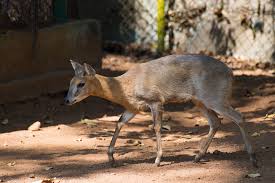
A rare four-horned antelope has been sighted for the first time in the Veerangana Durgavati Tiger Reserve.
Four-horned antelope, also known as Chousingha:
- It is a small bovid antelope found in Asia. Unique for its four horns, only males bear them, with one pair between the ears and another on the forehead.
- Typically, solitary and diurnal, they may form small groups.
- Endemic to India and Nepal, they inhabit open, dry, deciduous forests in hilly terrain, often near water bodies.
- Classified as Vulnerable on the IUCN Red List due to habitat loss and hunting.
Veerangana Durgavati Tiger Reserve:
- It spans Sagar, Damoh, and Narsinghpur districts in Madhya Pradesh, being the seventh in the state.
- It encompasses parts of the Nauradehi and Durgavati Wildlife Sanctuaries, featuring the historic Singorgarh Fort.
- A green corridor links it to the Panna Tiger Reserve for tiger movement.
- Rivers from the Narmada and Yamuna basins flow through, with dry deciduous vegetation dominated by Teak, Saja, and others.
Lipulekh Pass:
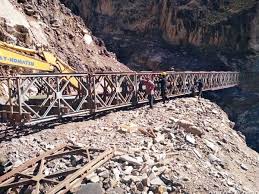
Indian traders, engaged in border trade through the Lipulekh pass since 1992, urge the government to resume trade with China.
- The route was closed due to the Covid-19 pandemic in 2019, leaving goods worth Rs 15 lakh stranded in Tibet.
- Lipulekh Pass is located near the India-China (Tibet)-Nepal tri-junction in Uttarakhand’s Pithoragarh district, is a crucial pass in the Kumaun region’s Kali Valley.
- Historically, it has served as a vital trade route for traders, pilgrims, and travelers, facilitating cultural exchange for centuries.
- Importantly, it offers a shorter travel route for the Kailash Mansarovar Pilgrimage, saving considerable travel time.
The Global Nitrous Oxide Budget 2024:
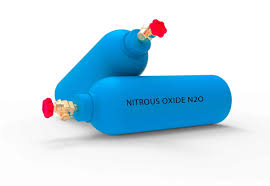
According to a new study by the Global Carbon Project (GCP) titled, “Global Nitrous Oxide Budget (1980-2020)”, the emissions of nitrous oxide have been rising continuously between 1980 and 2020.
- A study found that in 2021 and 2022, nitrous oxide was released into the air faster than ever before, even though we need to cut greenhouse gasses to fight global warming.
- Global Carbon Project (GCP) is an organisation established in 2001 which conducts studies that seek to quantify global greenhouse gas emissions and their causes.
Key Findings of the Study:
- Alarming Rise in Nitrous Oxide (N2O) Emission: N2O emissions from human activities have increased by 40% (3 million metric tons of N2O per year) between 1980 and 2020.
- Top 5 Emitters of N2O were China (16.7%), India (10.9%), US (5.7%), Brazil (5.3%) and Russia (4.6%).
- Thus, India is the 2nd largest emitter of N2O globally after China.
- In Per-Capita terms, India has the lowest per capita emission of 0.8 kg N2O/person lower than China (1.3), US (1.7), Brazil (2.5) and Russia (3.3).
- The concentration of atmospheric N2O reached 336 parts per billion in 2022, a 25% rise over pre-industrial levels, more than what was estimated by the Intergovernmental Panel on Climate Change (IPCC).
- The study points out that currently, no technologies exist that can remove N2O from the atmosphere.
Fintech Companies : Leading India’s Start-up Ecosystem

Fintech Companies continue to be an attractive option for entrepreneurs in the Start-Up ecosystem.
- As per the data from Tracxn (a company that provides market intelligence data for private companies), fintechs have received over 15% of the total equity funding into start-ups in FY24 so far.
- Fintech, a combination of the terms “financial” and “technology,” refers to businesses that use technology to enhance or automate financial services and processes.
- FinTech Ecosystem: India remains a global leader in fintech, 3rd highest globally after the US and UK, having a combined valuation of over USD 155 billion.
- Nearly a third of the soonicorn universe (soon to be unicorns) comprises fintechs.
- As per Startup India, an initiative by the Ministry of Commerce and Industry, the market size of India’s fintech industry is expected to reach USD 150 billion by 2025.
- Types:
- Digital Payments: These offer digital payment solutions, such as mobile wallets, online payment gateways, and peer-to-peer (P2P) payments. Ex-Phonepe, Paytm etc.
- Alternative Lending: They are also known as marketplace lending or Peer-2-Peer (P2P lending), occurring on online platforms that connect borrowers overlooked by traditional lenders with investors looking for high-yield investments. Ex: Lending Club, Prosper, PayPal Working Capital, GoFundMe etc.
- Insurance: These offer digital insurance solutions, such as health insurance, life insurance, and car insurance. Ex-Digit Insurance, Policybazaar etc.
- InvestmentTech: These offer digital investment solutions, such as stock trading, mutual funds, and cryptocurrency trading. Ex-Zerodha, Groww etc.
- Others types include Crop loan risk management (Eg: Satsure), online fraud detection (e.g. Tutelar), debt management (Debt Nirvana) and Banking-as-a-Service Platform (e.g., FidPay)
Greater Spotted Eagles:

A recent report revealed that the ongoing war between Russia and Ukraine has forced greater spotted eagles, a large raptor species, to change their migratory paths.
- It is a member of the subfamily Aquilinae, commonly known as “booted eagles”.
- It was once classified as a member of the genus Aquila, but has been reclassified to the distinct genus Clanga, along with the two other species of spotted eagle.
- During breeding season, greater spotted eagles are widely distributed across Eastern Europe, parts of Central Europe, central Russia, central Asia and parts of China, along with other isolated areas.
- During winter, they migrate, primarily to South Asia, Southeast Asia, the Middle East, the upper Mediterranean Basin, and parts of East Africa.
- Greater spotted eagles favor wetter habitats than most other booted eagles, preferring riparian zones as well as bogs, lakes, ponds, and other bodies of water surrounded by woodland
- IUCN Status: Vulnerable
- Mostly vanished from western and central Europe, with a limited breeding population in Polesia, Belarus.
- India’s Wildlife Protection Act, 1972: Schedule I (Other eagle species)
Volkhov River : In News
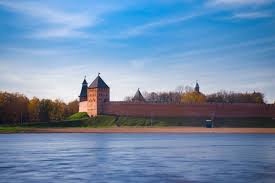
Four medical students from Maharashtra studying at a university in Russia drowned in the river Volkhov near St. Petersburg.
- The Volkhov River is in northwestern Russia.
- It flows from Lake Ilmen, passes through Novgorod, and goes north-northeast into Lake Ladoga through a flat, swampy area.
- In the town of Volkhov, the first hydroelectric station in the Soviet Union was built in 1926.
- The Volkhov, in early times part of the important Baltic Sea–Black Sea trade route, is navigable only by small craft.
- As per the data released by the Ministry of External Affairs (MEA) in 2022, there were nearly 16, 500 Indian students in Russia.
Soil Health Scheme : Tamil Nadu

Chief Minister M.K. Stalin started the “Chief Minister’s Mannuyir Kaathu Mannuyir Kaappom” plan, which was a big step toward sustainable farming in Tamil Nadu.
- With a strong budget of ₹206 crore, this project aims to improve the health and fertility of the soil across the area.
- A key part of the plan is to keep the land fertile by using green manure methods.
- A start-up fund of ₹20 crore has been set aside just for this.
- The project plans to spread green manure seeds over about 200,000 acres starting in 2024–25.
- This will directly help over 200,000 farmers.
- In addition to the main program, Chief Minister Stalin started other projects at the start of the plan to help farmers even more.
- Notably, 90 tractors and the same number of rotavators were formally launched.
- They were bought for a total of ₹10.25 crore.
- Farmers will be able to rent these cars for a small fee, which will make it easier to use machines in farming.
- The plan not only aims to boost immediate agricultural outputs, but it also ensures long-term sustainability and skill development in Tamil Nadu’s farming sector, setting an example for rural development that works for everyone.
High Seas Biodiversity Treaty:

Grethel Aguilar, the director general of the International Union for Conservation of Nature (IUCN), urged countries worldwide “to strive for a fully functional High Seas Biodiversity Treaty”.
- The high seas are those areas of the world’s oceans that are outside national jurisdictions.
- They constitute a huge chunk of the world’s oceans and are home to a wide variety of biodiversity.
Key points about the treaty:
- While countries are responsible for the conservation and sustainable use of waterways under their national jurisdiction, the high seas now have added protection from such destructive trends as pollution and unsustainable fishing activities.
- The treaty aims at strengthening resilience and contains provisions based on the polluter-pays principle as well as mechanisms for disputes. It addresses the issue of toxic chemicals and plastic waste flooding into coastal ecosystems.
Sustainable Management of Fish Stocks: More than one third of global fish stocks are over-exploited, according to the UN. - The treaty underlines the importance of capacity building and the transfer of marine technology.
- The treaty provides a legal framework for addressing various stressors affecting the marine environment in the high seas.
- The treaty is crucial for addressing the triple planetary crisis of climate change, biodiversity loss, and pollution.
- The treaty recognizes traditional knowledge. It has articles regarding the “polluter-pays” principle, and different impacts of human activities including areas beyond the national jurisdiction of the countries making those activities.
- The agreement was adopted by the 193 United Nations Member States.
- Before the treaty can enter into force, it needs to be ratified by at least 60 UN member states.
- However, only seven countries — Belize, Chile, Mauritius, Federated States of Micronesia, Monaco, Palau and the Seychelles — have ratified the treaty. India has neither signed nor ratified the treaty.
- Greenpeace called it “the biggest conservation victory ever”. The main achievement is the new possibility to create marine protected areas in international waters.
HIGH SEAS BIODIVERSITY TREATY:
- The United Nations agreement on biodiversity beyond national jurisdiction or BBNJ Agreement, also referred to by some stakeholders as the High Seas Treaty or Global Ocean Treaty, is a legally binding instrument for the conservation and sustainable use of marine biological diversity of areas beyond national jurisdiction.
- It is an agreement under the United Nations Convention on the Law of the Sea (UNCLOS).
- The text was finalised during an intergovernmental conference at the UN on 4 March 2023 and adopted on 19 June 2023.




